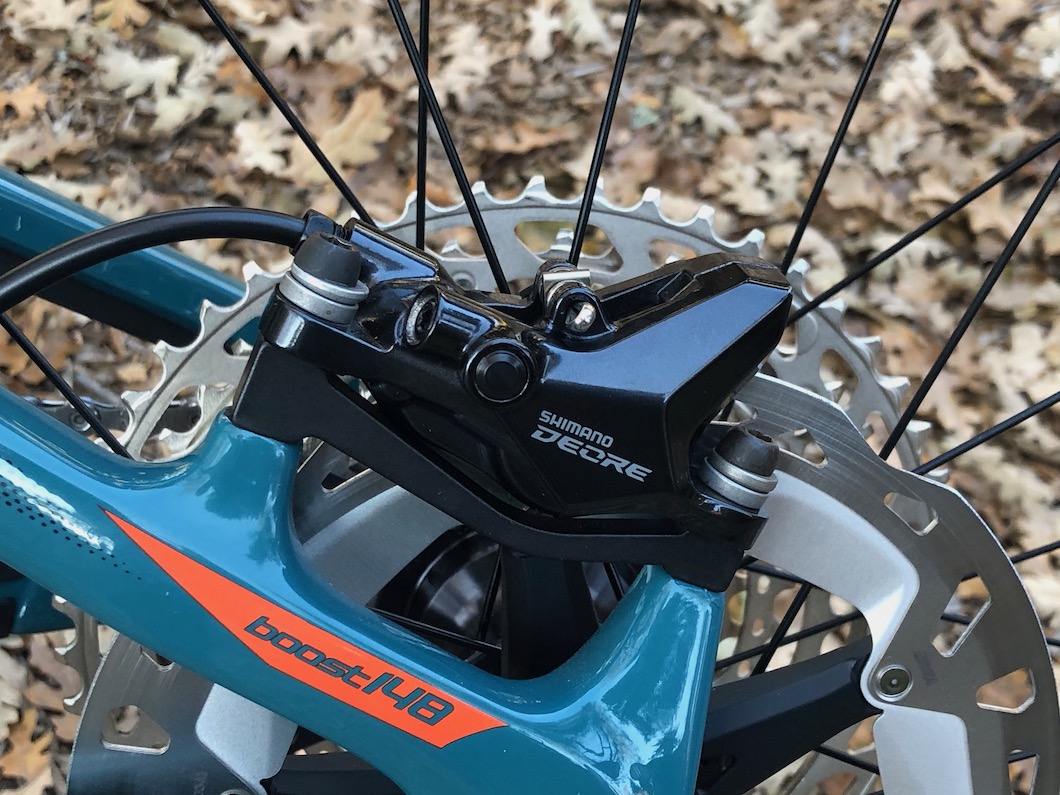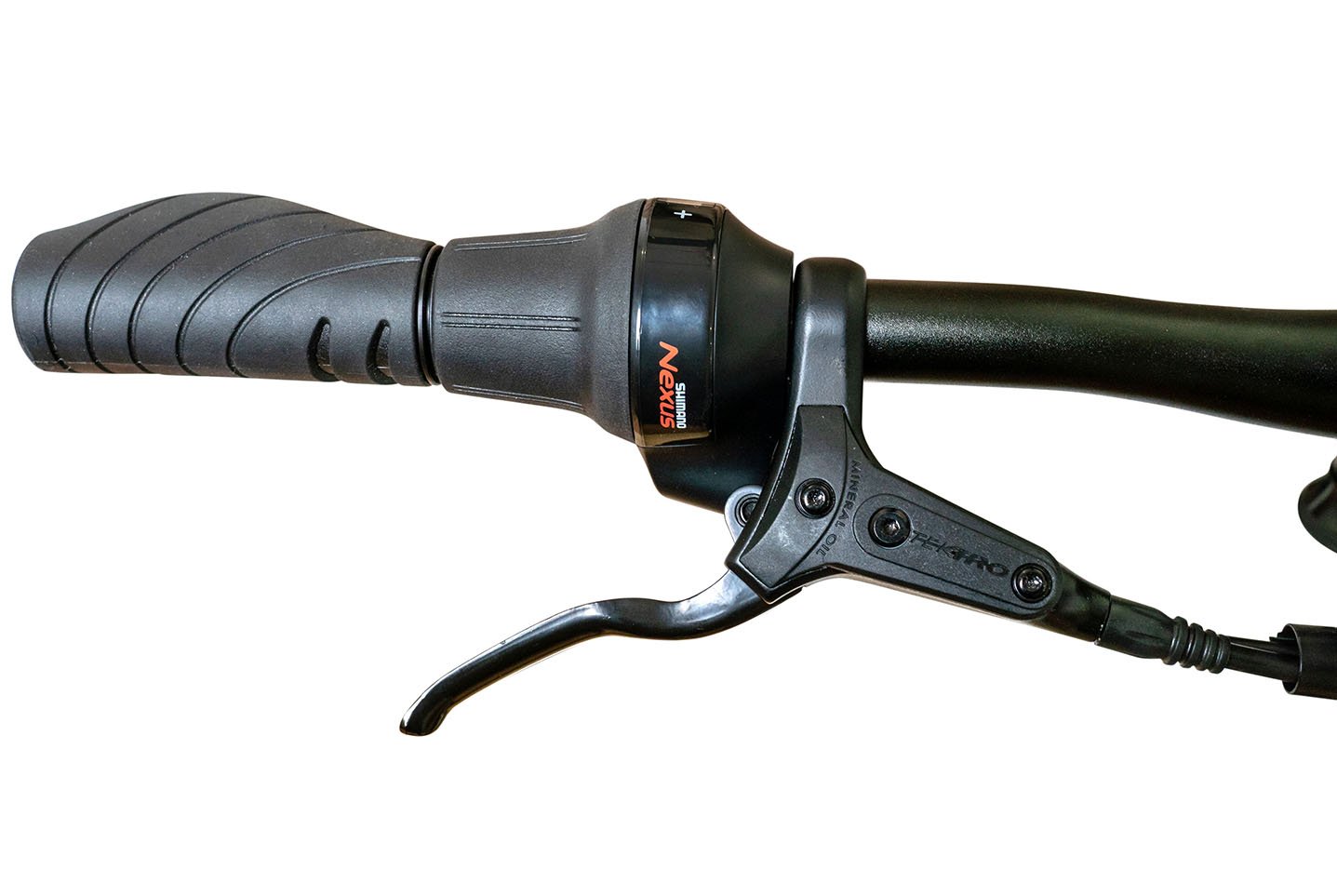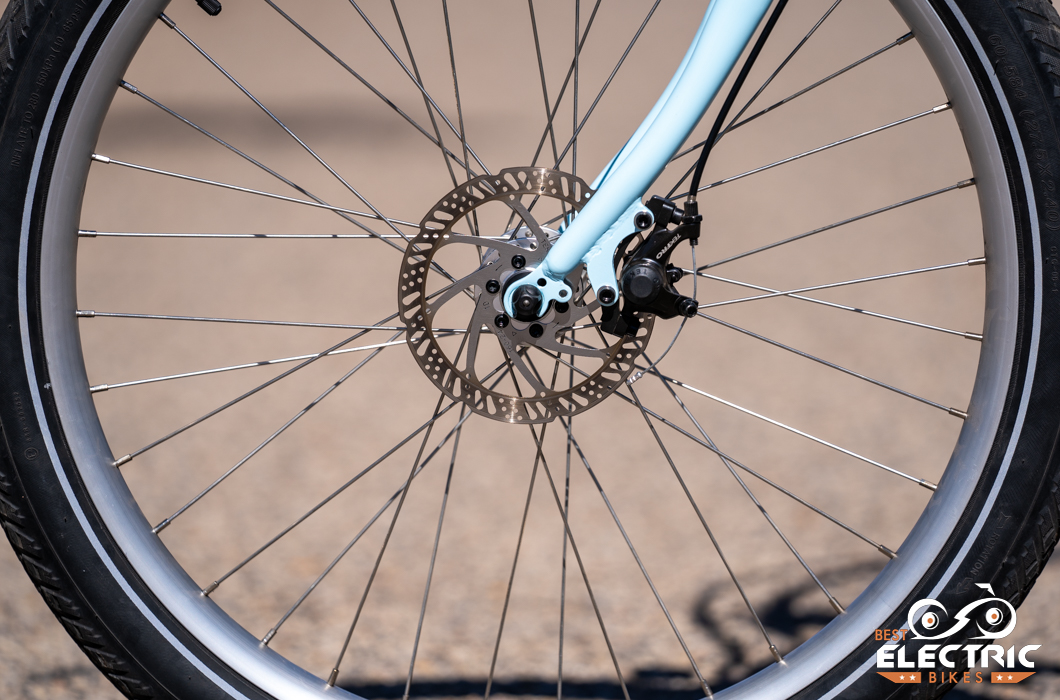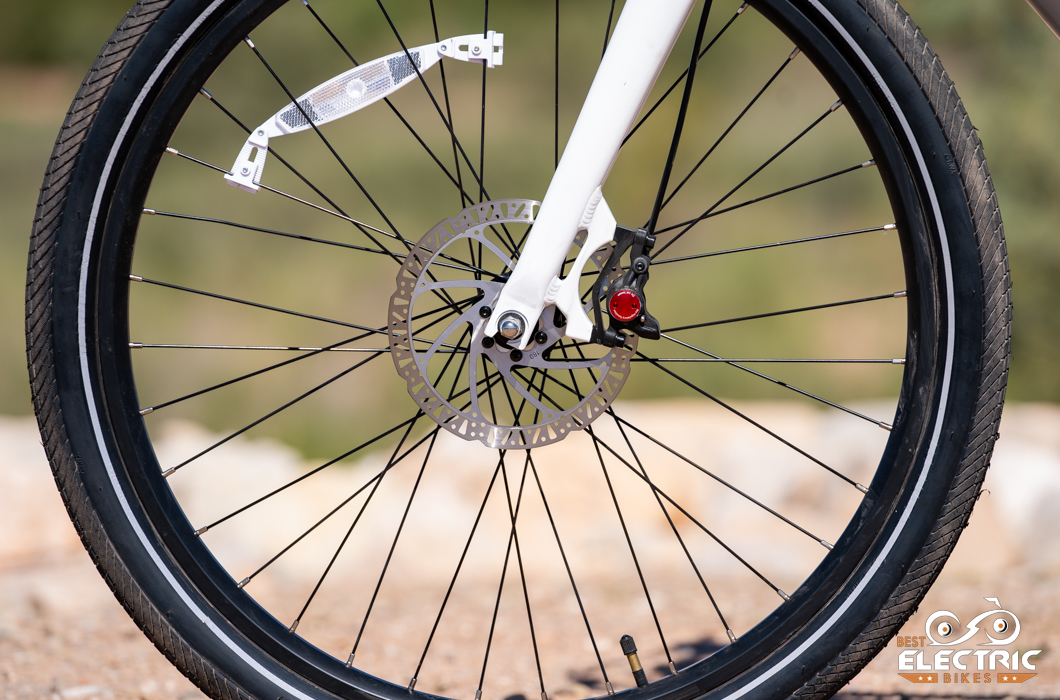
E-bikes allow riders to hit speeds they might only otherwise reach when going downhill. They are also heavier than regular bicycles. As a result, e-bikes need powerful brakes. Good brakes aren’t only about stopping quickly. Sure, a short, controlled stop is a must, but brakes do more than stop.
Once an e-bike is moving, we have two ways to control it. The first, and most obvious, way is by steering. The second is by braking and #2 affects #1. Any time we enter a turn, there’s a moment where we consider whether we need to apply the brakes and slow down in order to make the turn. Brakes allow us to control our speed.
Not so many years ago hydraulic disc brakes were a premium item available only on high-end mountain bikes. We’re fortunate that technology has advanced over the last 20 years because the maturation of this tech has allowed manufacturers to find disc brakes to spec on e-bikes while keeping those e-bikes affordable.
Disc brake types
Disc brakes come into two broad classes: mechanical and hydraulic. They share in common some basics: Levers operates calipers mounted on the fork and chainstay. Those calipers have pistons that push the disc brake pads and the pads squeeze the rotor to bring the e-bike to a stop.
Mechanical disc brakes use a traditional brake lever that pulls a cable and that cable pulls a cam at the caliper that squeezes the rotor. With hydraulic disc brakes the lever pushes disc brake fluid through a hose where it then causes two pistons to squeeze the rotor.
Before we go any further, we want to make clear that both methods of brake provide reliable performance. The question is, for the person shopping for an e-bike, should they prioritize one kind of brake over the other. The answer is … maybe.
How to tell them apart

Mechanical disc brakes and hydraulic disc brakes look a lot alike. From 20 feet away it’s nearly impossible to tell the difference. Looking at the spec sheet on an e-bike’s web site is the obvious cheat. The manufacturer has a duty to let us know. But, failing that, here’s how to tell, visually.
With mechanical disc brakes a cable is visible. It’s that simple. Cable housing and hydraulic hose is all but impossible to differentiate from looks. With both types of brake, hose or housing will run from the lever to the caliper, but with mechanical disc brakes a cable will emerge from the brake.
With hydraulic disc brakes, the lever will include a reservoir for fluid; it’s a boxy shape and will often include a note to use either mineral oil or DOT brake fluid.
Mechanical disc brakes

We tend to see mechanical disc brakes on more budget-oriented e-bikes. Any time an e-bike company is attempting to market an e-bike near the $1000 price point (or below), mechanical disc brakes are an effective way to reduce costs.
They reduce a manufacturer’s cost because on an e-bike with a flat bar, brake levers are made by literally dozens of companies. Shopping for a low-cost lever is easy. Similarly, manufacturers can source cables and housing from numerous makers. Ditto on rotors. And while there aren’t as many makers of mechanical disc brake calipers, there are a number of good makers, such as Tektro. Workers don’t need a great deal of skill to set these brakes up in an assembly factory and they can be set up quickly. Finally, the fact that a brand can mix and match different levers and brake calipers means they are less likely to experience supply interruptions which can delay shipments.
When it comes time for service, bike shops can replace cables and housing easily, so it’s not an expensive fix. For the DIY type, learning to service mechanical disc brakes is not hard. If the e-bike is stored indoors it will rarely need more than periodic brake pad replacement.
The downside to mechanical disc brakes is that for the rider who stores their e-bike outside without protection from the elements, the cable will eventually rust, making the brakes less effective or possibly nonfunctional.
Hydraulic disc brakes

Hydraulic disc brakes are more frequently spec’d on e-bikes. We rarely see anything other than hydraulic discs on e-bikes costing $1500 or more. Below that price, the appearance of hydraulic disc brakes is a pleasant surprise, but because of the way technology trickles down, their appearance on budget-minded e-bikes is less and less surprising.
There are a couple of notable differences between mechanical and hydraulic disc brakes. The first big difference is that hydraulic disc brakes tend to offer more stopping power. That’s not uniformly true—the best mechanical disc brakes are more powerful than the most inexpensive hydraulic disc brakes—but it’s true enough to be a rule of thumb. Second, hydraulic disc brakes have a very smooth feel at the lever and tend to offer better modulation; that is, the rider has an easier time fine-tuning how hard they are braking and that gives the rider a great sense of control and control is the cornerstone of confidence. The other big difference between mechanical discs and hydraulic ones is that they tend to fare better when left out in the elements.
The extra stopping power found in hydraulic disc brakes also gives them an edge over mechanical disc brakes in wet conditions. Even mechanical disc brakes work better in the wet than rim calipers, but hydraulic discs seem to see no decrease in braking power even in pouring rain.
With hydraulic disc brakes, manufacturers need to purchase an entire brake system from the manufacturer, be it Tektro, Shimano or some other manufacturer, such as Zoom. At the assembly factory, the workers need both more skill and more time to set up the brakes and because they come as a set they are more prone to supply issues.
Hydraulic disc brakes rarely need maintenance beyond brake pad replacement. If the bike has been sitting and a pull on the brake lever sees it travel all the way to the bar, but after a few squeezes of the lever the brake functions normally again, that’s an indication that there may be air in the hydraulic line and the brakes need to be bled. Our advice is to take the e-bike to the shop for brake service. Bleeding brakes is not very DIY and in our experience becoming proficient at it requires doing it lots. Better to enlist a pro.
Riders who are bigger, carry heavy loads or live in an especially hilly place will want to note that 4-piston hydraulic calipers—that is, a brake caliper with twice as many pistons—are a downhill mountain bike race technology that has trickled into some e-bikes. They aren’t common, but e-bikes equipped with them are out there.
Weighing the options
While we think it pays to understand the differences between the different kinds of brakes, we don’t tend to recommend that someone shopping for an e-bike make the type of brake one of their top priorities. However, even rules of thumb have exceptions.
For this we return to our candidates for 4-piston hydraulic brake calipers. Anyone shopping for an e-bike who lives in hilly locale like San Francisco or Seattle, bigger riders and riders likely to be carrying a heavy backpack, saddlebags or other items that will weigh down a rack or basket, will be well-served by an e-bike spec’d with 4-piston calipers. Many cargo e-bikes and utility e-bikes come equipped with them—for obvious reasons—so for anyone concerned with their ability to stop, those categories of e-bike are an excellent place to begin shopping.
For anyone with questions about the brake on a specific make and model of e-bike, we encourage checking to see if we have reviewed that e-bike at our sister site ElectricBikeReport.com. Our colleagues perform a three-pass brake test to judge how effectively the brakes stop the e-bike and they average the three stops to give shoppers a sense of how effective the brakes are.
Here at Best Electric Bikes we have a deep archive of e-bike reviews and every e-bike we’ve reviewed is spec’d with brakes—be they hydraulic or mechanical—that we know to be safe and reliable.


Leave a Reply